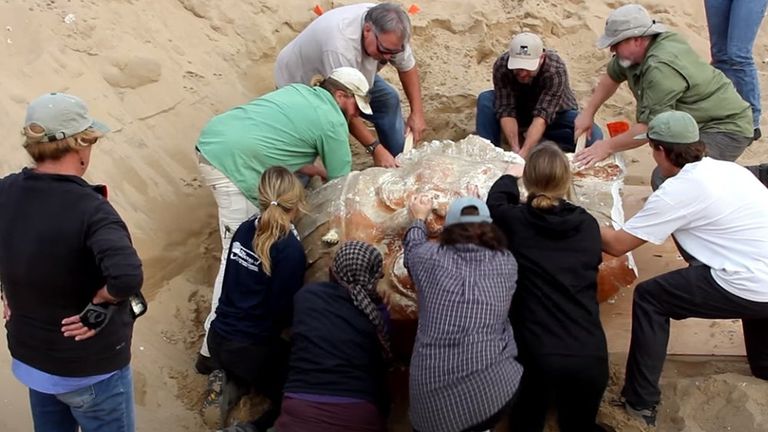When Archaeologists Dug Up A Californian Sand Dune, They Discovered An Astonishing Artifact
Along California’s picturesque coastline, archaeologists meticulously dig away at the sprawling sands. Soon enough, they hit something. And as the team exhumes the lost relic, it becomes clear that their find is not merely a cast-off from the ocean, nor does it fit in with the state’s history. Instead, the 300-pound artifact seems to be from halfway across the world.
The dig took place at the Guadalupe-Nipomo Dunes, the longest system of faultless coastal dunes on the planet. Since at least the 1980s archaeologists have been interested in the sandy expanse, having caught wind of a secret bounty hidden beneath its mounds. And now, after many years of planning and digging, their efforts have landed them an astounding prize: a relic seemingly a few thousand miles – and years – from its home.
Certainly, the Guadalupe-Nipomo Dunes have proved bountiful in recent years, with excavators rescuing a slew of small wares from its sandy expanse. But while the diverse array of artifacts recovered from the region is indeed impressive, most would agree that the dunes’ most stunning treasure – which was retrieved in 2017 – blows all of those out of the water. And perhaps even more deserving of awe than the relic itself is the story of where it came from.
The Guadalupe-Nipomo Dunes stretch for the best part of 20 miles, so it’s a wonder that any of its hidden treasures have been unearthed – let alone such a momentous prize. The vast region, with its endless sandy mounds rising and falling, must surely make for tricky navigating. Wind constantly breezes through the area, which molds the dunes and pushes some of them up to 500 feet high. And, at its lower points, the park has yellow shrubbery, freshwater pools and ocean waves crashing into the shoreline.
Despite its harsh landscape, though, the region has been inhabited for many centuries. In the 18th century, Spanish explorers arrived, and Spanish commander Don Gaspar de Portolà and his expedition crew spent a night out on the dunes. Fast-forward two centuries and the Guadalupe-Nipomo Dunes took on a completely different set of inhabitants. Creative types, intellectuals and even naturists flocked to the sandy stretch between the 1920s and ’40s. They claimed that the natural area emanated a creative energy, inspiring them to publish a magazine called The Dune Forum.

